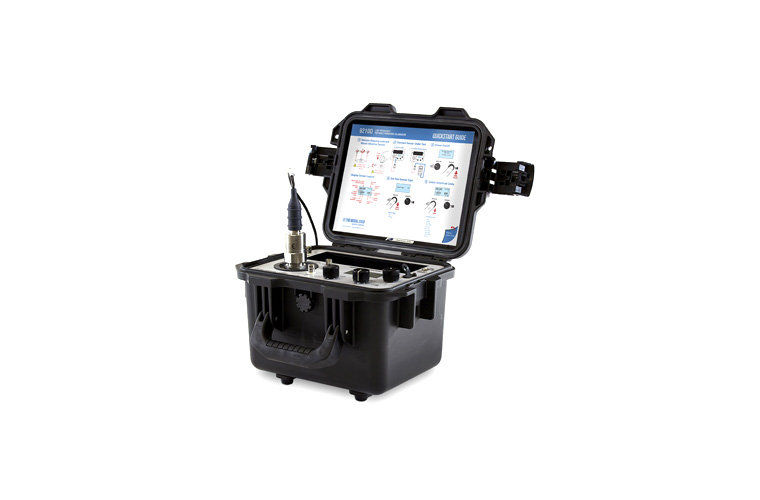Main Menu
- Home
- Product Finder
- Calibration Systems
- Calibration Services
- Digital Sensing
- Industrial Vibration Calibration
- Modal and Vibration Testing
- Non-Destructive Testing
- Sound & Vibration Rental Program
- Learn
- About Us
- Contact Us
The 9210D Low Frequency Portable Vibration Calibrator is the world’s first and only ISO 17025-accredited, NIST-traceable portable vibration calibrator capable of creating calibration certificates for critical instrumentation used to protect slow speed rotating equipment. Until now, technicians were required to remove moving coil velocity sensors, low frequency accelerometers and proximity probes during an outage and send these instruments to a separate lab for calibration. Battery-powered, rugged and portable, the Model 9210D brings low frequency calibration to the plant floor, allowing users to verify all aspects of their measurement chain, confirm correct operation of critical alarm thresholds, and create a printable, traceable calibration records.

Immediate instrument verification is available via sensitivity display on the brightly lit LCD screen. The test sensor input supplies ICP® power or can be toggled to voltage mode, allowing the unit to calculate sensitivity and create calibration certificates for Eddy current probes and moving coil velocity sensors. ISO 17025-compliant calibration certificates are created via Microsoft® Excel macro for both linearity and frequency response.
View Datasheet | View Specification Sheet
| US | Metric | |
|---|---|---|
| Frequency Range (operating) [1] | 0.7 Hz to 2 kHz | 42 to 120k CPM |
| Maximum Amplitude (100 Hz, no payload) | 2 g pk | 19.6 m/s² pk |
| Accuracy of Displayed Acceleration & Sensitivity Readout (2 Hz to 2 kHz) [2] [3] | ±3 % | |
| Test Sensor In | Voltage, ICP [4] | |
| Operating Battery Life [5] | 14 hours | |
| Weight | 18 lb | 8.2 kg |
| Sensor Mounting Platform Thread Size | ¼-28 | |
[1] 100-gram payload
[2] Measured with 30-gram quartz reference accelerometer
[3] Depending upon payload at higher frequencies transverse motion may cause localized increased measurement uncertainty
[4] 5 mA constant
current excitation to ICP (IEPE) sensor.
[5] As shipped from factory in new condition and measured at 100 Hz, 1 g pk with 100-gram payload
For a more comprehensive list of accessories, please see the Product Specification Sheet.
| Model | Description |
|---|---|
| Included | |
| 081B20 | ¼-28 to ¼-28 Adaptor |
| 081A08 | 10-32 to ¼-28 Adaptor |
| M081A63 | M8 x 1.25 M to ¼-28 M Mounting Stud |
| 081M165 | M8 x 1 M to ¼-28 M Mounting Stud |
| PVC-MNT01 | M8 x 1.25 F Thru Hole Mounting Pad |
| PVC-MNT02 | M8 x 1 F Thru Hole Mounting Pad |
| Suggested | |
| 9100-PPA01 | Proximity probe adaptor kit for probes with 5 mm or 8 mm tip diameter [1] |
[1] For metric unit micrometer, use Model 9100-MPPA01
For more articles, videos, and Tech Talks, visit our Education Portal
An internal high-resolution quartz reference accelerometer provides unparalleled accuracy while the rugged carbon fiber composite armature supports heavy payloads. A durable Pelican® Storm Case and long battery life make it ideal for use on the plant floor. Closed-loop control shortens calibration time. The 9210D can be scaled in displacement, velocity or acceleration (metric or English units) with 0.7 Hz to 2 kHz frequency range (42 to 120 000 CPM).
The 9210D’s rugged design and payload capability simulates vibration at speeds as low as 42 CPM (0.7 Hz) and supports the creation of ISO 17025 compliant calibration certificates for:
The lightweight and portable design also supports in-situ verification of: